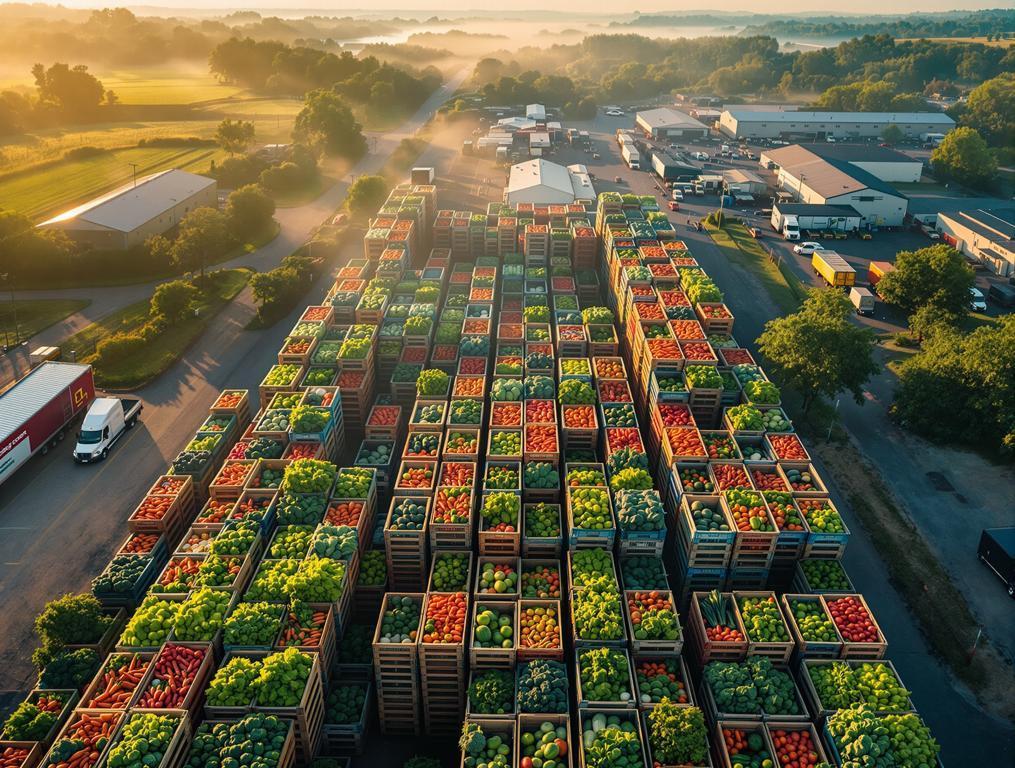The wholesale produce markets of Virginia hum with pre-dawn activity as I navigate between towers of wooden crates stacked with carrots, broccoli, and potatoes. It’s 5:30 AM in this rural district just 30 minutes north of Adelaide, where 6,700 residents quietly feed 1.3 million South Australians. The winter air is crisp at 7°C, with plumes of condensation rising from workers’ breath as they load delivery trucks bound for the city. “You’re looking at South Australia’s dinner table,” whispers my guide, gesturing across hectares of market infrastructure invisible to most visitors.
The Invisible Food Engine: How Virginia Feeds Adelaide
Virginia operates as South Australia’s hidden agricultural powerhouse, with its wholesale produce markets supplying over 75% of Adelaide’s fresh vegetables year-round. Unlike the tourist-friendly Adelaide Central Market, these industrial-scale operations remain largely unseen by the public.
I watch as farmers—many descendants of Italian immigrants who arrived in the 1950s—unload winter crops harvested just hours earlier. The scale is staggering: one small community feeding over 1.3 million people across greater Adelaide.
“People photograph their meals at trendy Adelaide restaurants without realizing everything on their plate came from here,” explains a third-generation farmer as we tour his family’s 17-hectare operation. His grandfather arrived from Calabria in 1952, bringing Mediterranean growing techniques that revolutionized local agriculture.
The contrast with nearby Adelaide Hills wine country is striking. While small-scale South Australian wineries welcome visitors with manicured tasting rooms, Virginia’s utilitarian landscape prioritizes production over presentation.
Winter’s Hidden Harvest: A Seasonal Powerhouse
July marks peak winter harvest in Virginia, with leafy greens and root vegetables dominating production. Frost-kissed fields yield sweeter carrots and more tender broccoli—a seasonal advantage many tourists miss while focusing on South Australia’s summer attractions.
Walking the wholesale market floor, I notice buyers from Adelaide’s restaurants selecting the morning’s best produce. The population-to-impact ratio is remarkable: each Virginia resident effectively feeds 194 South Australians daily.
“We don’t have wine tours or fancy restaurants. What we have is honest soil and generations of knowledge. That’s why Adelaide eats well—because places like Virginia exist in the background.”
The Virginia Growth Area is projected to double its population by 2046, creating tension between urban expansion and agricultural preservation. This mirrors challenges faced by food-producing regions worldwide, where rural economic models evolve under urban pressure.
Unlike tourist-oriented agricultural regions that showcase farm-to-table experiences, Virginia remains focused on industrial-scale distribution. Its wholesale market serves as the linchpin in a sophisticated food supply chain that most consumers never witness.
What the Guidebooks Won’t Tell You
Virginia’s wholesale markets aren’t listed in tourism brochures, but with the right connections, visitors can arrange early morning tours between 4:30-7:00 AM. Contact the Adelaide Produce Market administration at least two weeks ahead to request access with a market guide.
For a self-guided experience, visit farmgate stands along Port Wakefield Road where several Italian-Australian families sell directly to the public. The best produce appears Thursday through Saturday mornings, with winter specialties like broccoli, cauliflower, and Jerusalem artichokes currently at their peak.
To truly understand Virginia’s role in South Australia’s food ecosystem, combine your visit with the hyperlocal supply chain that connects to Adelaide’s Central Market. Begin at dawn in Virginia, then follow the produce to its city destination.
The juxtaposition between Virginia’s industrial agriculture and tourist destinations like Western Australia’s picturesque wildflower towns reveals a fundamental truth about travel: sometimes the most essential places are the least visible.
Standing beside a mountain of freshly harvested carrots as the winter sun breaks through morning fog, I’m reminded that behind every famous food destination lies a Virginia—a place where the real work of feeding people happens without fanfare. Sarah would appreciate the authenticity here, I think, watching workers sort produce with practiced efficiency. There’s something profound about visiting the beginning of the food chain rather than just its Instagram-ready endpoint. Virginia isn’t asking to be discovered, but understanding its role offers a deeper connection to South Australia than any wine tour could provide.
